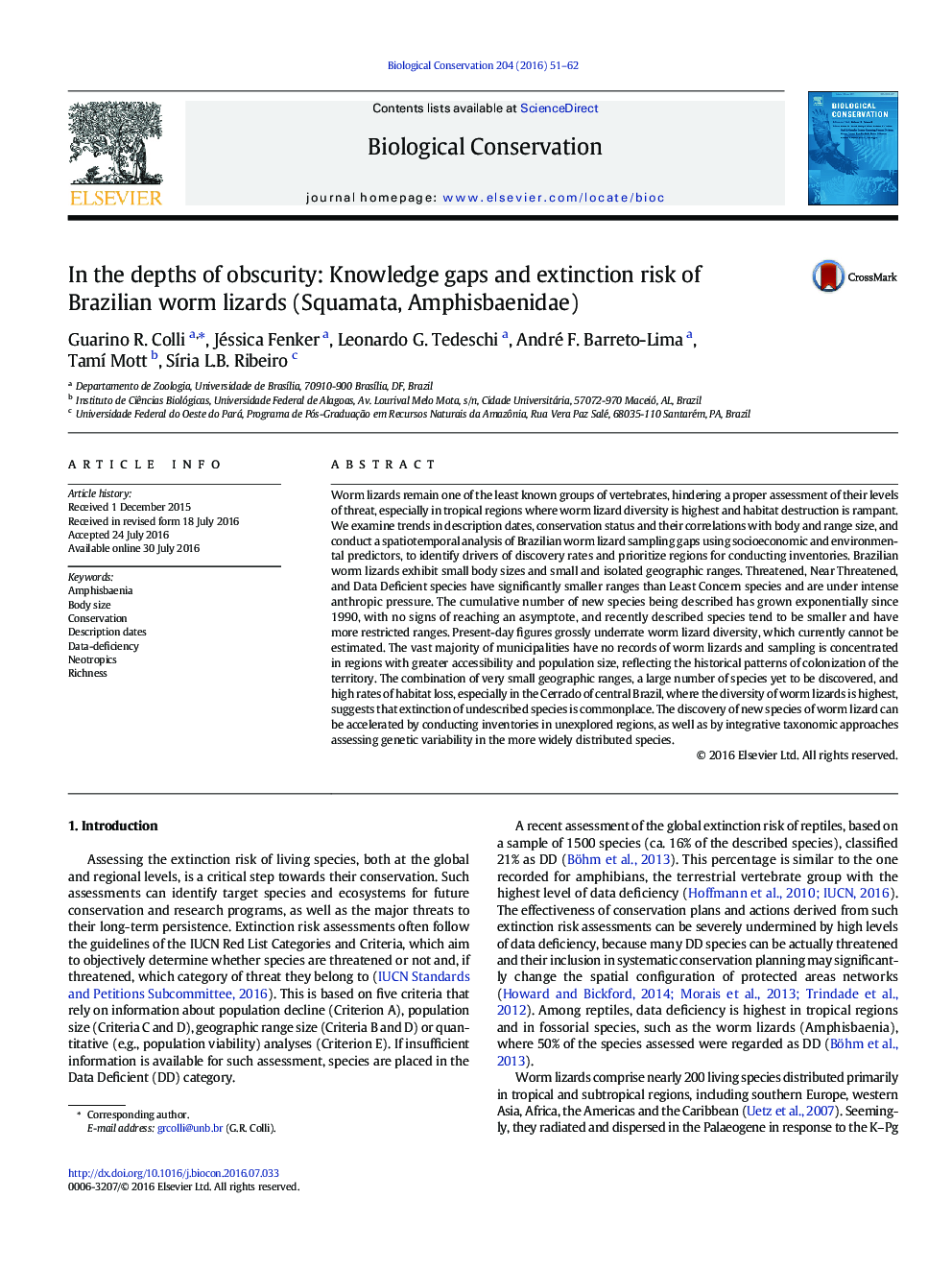| Article ID | Journal | Published Year | Pages | File Type |
|---|---|---|---|---|
| 5743375 | Biological Conservation | 2016 | 12 Pages |
â¢Most Brazilian worm lizards exhibit small body sizes and small and isolated ranges.â¢Most species were described recently and current richness is grossly underestimated.â¢Sampling is concentrated in regions with greater accessibility and population size.â¢Diversity is highest along the SW-NE dry diagonal, especially in the Cerrado biome.â¢Knowledge can improve with inventories and integrative taxonomy studies.
Worm lizards remain one of the least known groups of vertebrates, hindering a proper assessment of their levels of threat, especially in tropical regions where worm lizard diversity is highest and habitat destruction is rampant. We examine trends in description dates, conservation status and their correlations with body and range size, and conduct a spatiotemporal analysis of Brazilian worm lizard sampling gaps using socioeconomic and environmental predictors, to identify drivers of discovery rates and prioritize regions for conducting inventories. Brazilian worm lizards exhibit small body sizes and small and isolated geographic ranges. Threatened, Near Threatened, and Data Deficient species have significantly smaller ranges than Least Concern species and are under intense anthropic pressure. The cumulative number of new species being described has grown exponentially since 1990, with no signs of reaching an asymptote, and recently described species tend to be smaller and have more restricted ranges. Present-day figures grossly underrate worm lizard diversity, which currently cannot be estimated. The vast majority of municipalities have no records of worm lizards and sampling is concentrated in regions with greater accessibility and population size, reflecting the historical patterns of colonization of the territory. The combination of very small geographic ranges, a large number of species yet to be discovered, and high rates of habitat loss, especially in the Cerrado of central Brazil, where the diversity of worm lizards is highest, suggests that extinction of undescribed species is commonplace. The discovery of new species of worm lizard can be accelerated by conducting inventories in unexplored regions, as well as by integrative taxonomic approaches assessing genetic variability in the more widely distributed species.
Graphical abstractDownload high-res image (206KB)Download full-size image
